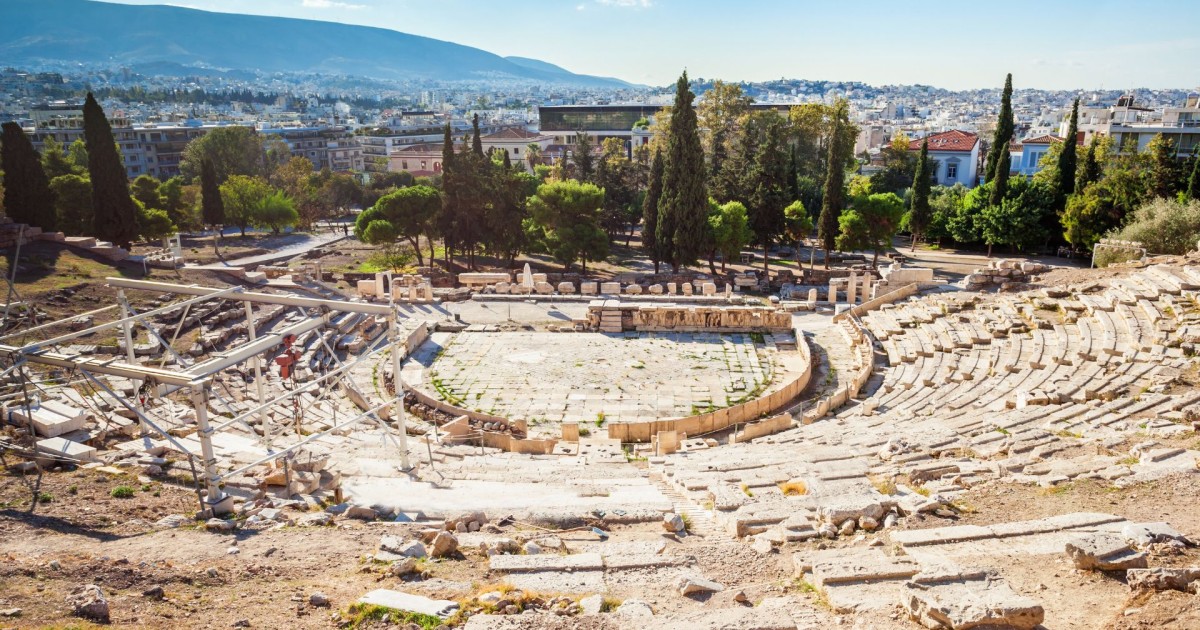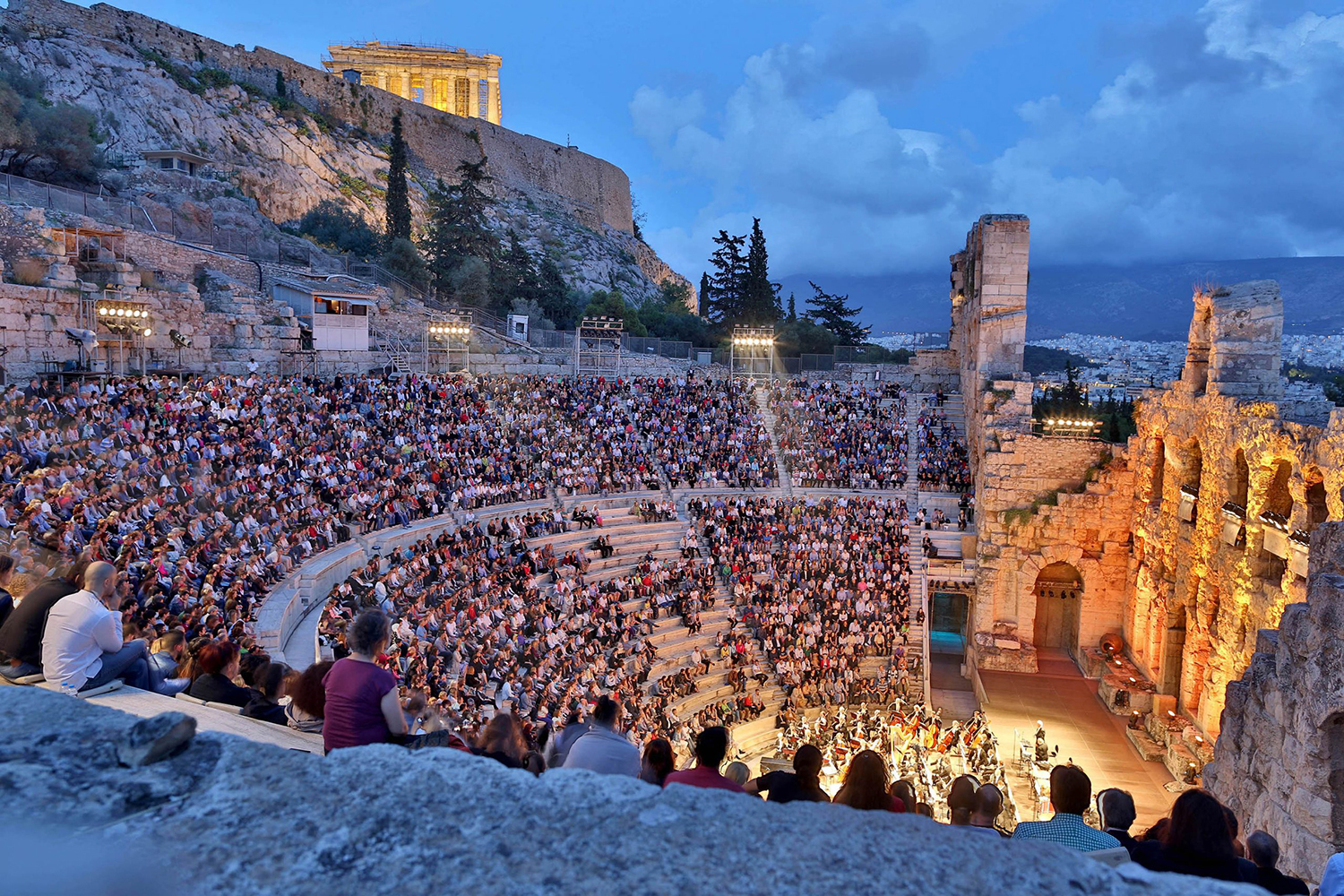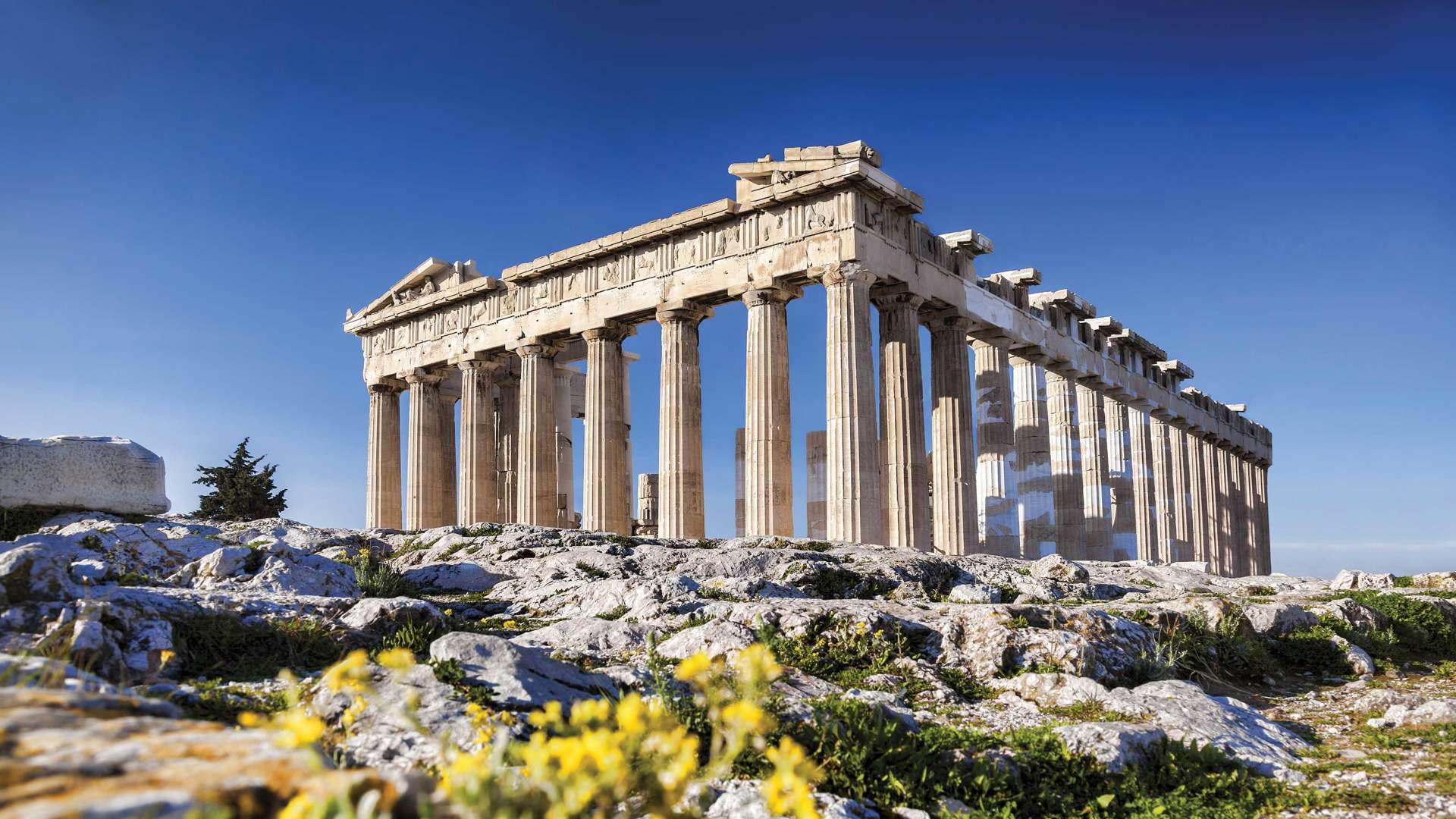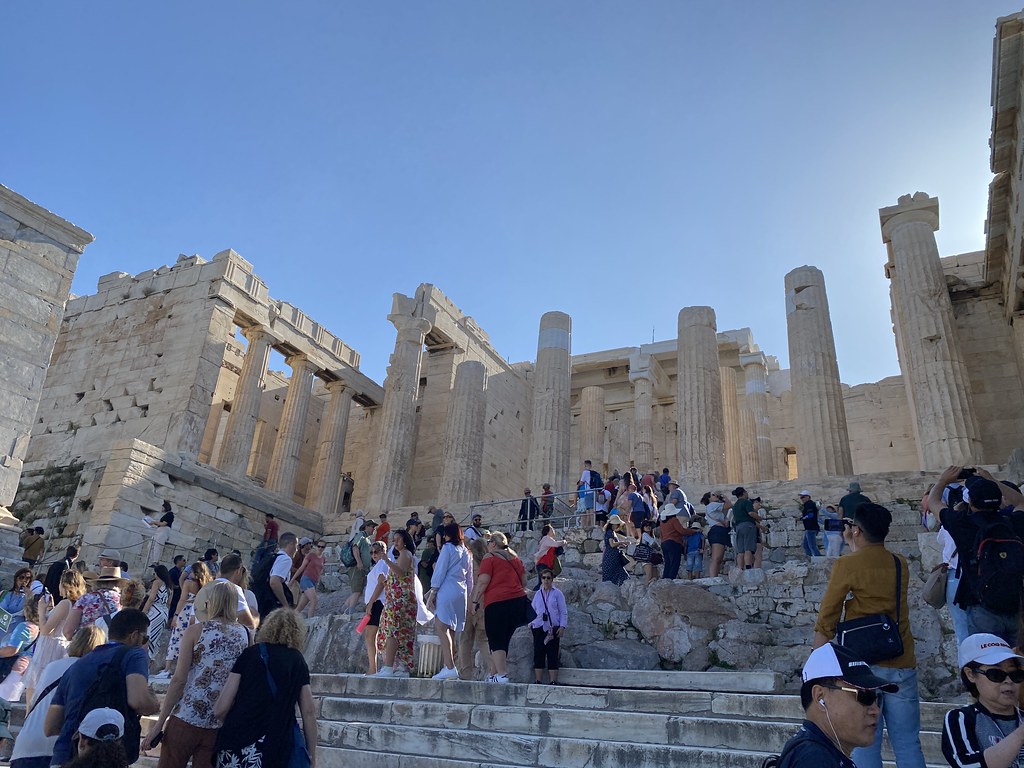Walk Through Time: A Journey to Athens' Acropolis

Introduction
A Brief History of Athens' Acropolis
The Acropolis is a famous ancient site located in Athens, Greece. It is a hilltop fortress that humans have occupied since prehistoric times. The most well-known structure on the Acropolis is the Parthenon, a temple dedicated to the Greek goddess Athena.
The development of the Acropolis can be traced back to the 5th century BCE when the Athenians decided to rebuild the site after the Persians destroyed it. The Parthenon and other iconic structures were built under the leadership of architects and sculptors such as Ictinus and Phidias. These buildings were not only marvels of engineering but also served as symbols of Athens' power and democracy.
Relevance and Significance of the Acropolis to Greek History
The Acropolis holds great significance for Greek history and culture. Here are some key reasons why it is considered important:
-
Architectural Marvel: The Acropolis showcases the extraordinary architectural skills of the ancient Greeks. The precision and craftsmanship displayed in the construction of the Parthenon and other structures are still admired today.
-
Religious Significance: The Acropolis was considered a sacred site for the ancient Greeks, especially the Parthenon, which was dedicated to their patron goddess Athena. It was used for religious ceremonies, festivals, and sacrifices.
-
Symbol of Democracy: The Acropolis represents the birthplace of democracy. It was a gathering place for the Athenian citizens where important decisions were made and justice was served.
-
Legacy of Greek Philosophy: The philosophers of ancient Greece, such as Socrates and Plato, often gathered on the Acropolis to discuss their ideas. Their teachings and philosophies have had a profound influence on Western civilization.
-
Tourist Attraction: The Acropolis attracts millions of visitors from around the world every year. It is a UNESCO World Heritage site and offers breathtaking views of Athens.
The Acropolis of Athens is a site of immense historical and cultural significance. It serves as a testament to the architectural brilliance, religious practices, democratic ideals, and intellectual legacy of the ancient Greeks. Visiting the Acropolis allows one to step back in time and appreciate the rich history and heritage of Greece.

Preparing for your Visit
Opening Hours and Admission Fees
Before planning your visit to the Acropolis, it's important to know the opening hours and admission fees. The Acropolis is open to visitors from April to September, from 8 am to 8 pm, and from October to March, from 8:30 am to 5 pm. However, it's always good to check the official website for any updates or changes to the opening hours.
As for the admission fees, there are different ticket options available. The standard ticket costs €20 for adults and €10 for concessions (students, seniors, etc.). There is also a combination ticket available for €30, which includes multiple archaeological sites in Athens, including the Acropolis. It's worth noting that admission is free for visitors under the age of 18.
Tips for a Smooth Visit to the Acropolis
To ensure a smooth and enjoyable visit to the Acropolis, here are some tips to keep in mind:
-
Arrive early: The Acropolis can get crowded, especially during peak tourist season. Arriving early in the morning can help you beat the crowds and have a more peaceful experience.
-
Wear comfortable shoes: The Acropolis is situated on a hill, and there are steps and uneven paths to navigate. It's important to wear comfortable shoes to explore the site without any discomfort.
-
Stay hydrated: Athens can have hot temperatures during the summer months, so it's crucial to stay hydrated. Bring a water bottle with you and make use of the water fountains available at the site.
-
Respect the rules: The Acropolis is a historical site, and it's important to respect the rules and regulations. Avoid touching or leaning on the ancient structures and follow any instructions given by the staff.
-
Take your time: The Acropolis is a treasure trove of history and beauty. Take your time to explore the site, admire the architecture, and enjoy the panoramic views of Athens.
By following these tips and being prepared, you can make the most out of your visit to the Acropolis and create lasting memories of this iconic ancient site.

Exploring the Acropolis
The Propylaea: Gateway to the Acropolis
As you begin your exploration of the Acropolis, the first structure you encounter is the Propylaea. This monumental gateway serves as the entrance to the sacred site and is an impressive architectural marvel. As you walk through the Propylaea, take a moment to appreciate the grandeur and precision of the Doric columns and the beautiful marble carvings. The Propylaea offers a glimpse into the grandeur of ancient Athens and sets the stage for the wonders that await you further inside the Acropolis.
The Parthenon: Ancient Marvel and Symbol of Greek Civilization
One cannot visit the Acropolis without marvelling at the majestic Parthenon. Dedicated to the goddess Athena, this iconic temple is considered a masterpiece of classical architecture and a symbol of Greek civilization. As you step into the temple, you'll be captivated by the grandeur of the towering columns and the intricately designed friezes that depict mythical battles and legendary heroes. Make sure to take your time to admire the delicate details and the harmonious proportions of this ancient marvel. From the Parthenon, you can also enjoy breathtaking views of the city of Athens, providing a perfect vantage point for panoramic photographs.
Throughout your exploration of the Acropolis, you will encounter other significant structures, such as the Erechtheion and the Temple of Athena Nike, each with its own unique history and architectural style. These ancient ruins paint a vivid picture of the richness and splendour of ancient Greek civilization.
Remember, as you explore the Acropolis, follow the guidelines provided by the staff to ensure the preservation of this historical site. Take the opportunity to immerse yourself in the rich heritage and history of the Acropolis and let your imagination transport you back to ancient Greece.
By taking the time to appreciate the architectural marvels, learning about the stories behind each structure, and enjoying the panoramic views of Athens, you will create cherished memories of your visit to this extraordinary ancient site. Enjoy your exploration of the Acropolis, and may it be a truly unforgettable experience.

Other Architectural Marvels
The Erechtheion: A Temple Rich in Mythology
As you continue your exploration of the Acropolis, you will come across another fascinating structure, the Erechtheion. This temple is known for its intriguing design, featuring a combination of both Ionic and Doric styles. But what truly sets the Erechtheion apart is its connection to Greek mythology. Legend has it that the temple was built on the spot where Poseidon and Athena competed for the patronage of Athens. Take a moment to appreciate the famous Caryatids, the female statues that support the southern porch of the temple. Each one is unique and adds an element of grace and beauty to the structure. The Erechtheion offers a glimpse into the mythological world that influenced the lives of ancient Greeks and showcases their devotion to their gods.
The Temple of Athena Nike: Preserving Victory and Heritage
Another notable structure you will encounter during your exploration is the Temple of Athena Nike. This small but graceful temple is dedicated to the goddess of victory, Athena Nike. The temple's name translates to "Victory Wingless" and refers to the belief that Athena Nike would grant victories without the need for wings to fly. With its elegant Ionic style, the Temple of Athena Nike is a testament to the mastery of ancient Greek architecture. The temple also served as a symbolic representation of Athens' military achievements and was used as a treasury to store precious artefacts. As you admire the temple, take a moment to reflect on the importance of victory and the celebration of Greek heritage.
Throughout your journey, you will be captivated by the artistry, history, and symbolism of these magnificent structures. Each one tells a story and contributes to the rich tapestry of ancient Greek civilization. Remember to follow the guidelines provided by the staff to ensure the preservation of this historical site. Take the opportunity to immerse yourself in the culture, mythology, and splendour of the Acropolis. Let your imagination transport you back to ancient Greece and create cherished memories of your visit to this extraordinary site. Enjoy your exploration of the Acropolis, and may it be a truly unforgettable experience.

The Acropolis Museum
Highlights of the Acropolis Museum
As you continue your exploration of the Acropolis, make sure not to miss a visit to the Acropolis Museum. This modern museum is a treasure trove of ancient Greek artefacts and offers a fascinating insight into the history and culture of Athens. With its sleek and contemporary design, the museum provides the perfect setting to showcase the incredible collection of sculptures, statues, and other archaeological finds.
One of the highlights of the Acropolis Museum is the Parthenon Gallery, which houses the marble friezes that once adorned the iconic Parthenon temple. Here, you can marvel at the intricate carvings that depict scenes from Greek mythology and everyday life. The museum's design allows for a closer look at these masterpieces, offering a truly immersive experience.
Another must-see at the Acropolis Museum is the Caryatid Gallery. Here, you can admire the original Caryatids, which were once part of the Erechtheion temple. These delicately carved female statues, with their flowing robes and graceful poses, are a marvel of ancient Greek artistry. The gallery not only showcases the five original Caryatids but also presents a replica of the missing sixth statue.
Unveiling the Secrets of the Acropolis Artifacts
The Acropolis Museum is not only a place to admire ancient artefacts but also a centre for research and preservation. The museum's conservation laboratories are equipped with state-of-the-art technology, allowing experts to study and restore the delicate sculptures and artworks. Visitors can witness the preservation process firsthand and gain a deeper understanding of the challenges faced in preserving these valuable relics.
The museum also hosts a series of temporary exhibitions that delve further into specific aspects of ancient Greek history and culture. These exhibitions provide a unique opportunity to explore different themes and periods, expanding your knowledge of the ancient world.
Before leaving the museum, don't forget to stop by the rooftop café. From here, you can enjoy panoramic views of the Acropolis while savouring delicious Greek cuisine. It's the perfect way to end your visit to the Acropolis Museum, immersing yourself in the ancient past while appreciating the vibrant present of Athens.
The Acropolis Museum offers a captivating blend of art, history, and modernity. Don't miss the chance to explore this remarkable institution and discover the wonders of ancient Greece. Plan your visit accordingly and be prepared to be awestruck by the incredible artefacts on display.

Panoramic Views and Stunning Landscapes
The Odeon of Herodes Atticus: Ancient Theater with Modern Performances
Embark on a journey through time at the Odeon of Herodes Atticus, an ancient theatre nestled on the southern slope of the Acropolis. Originally built in 161 AD, this magnificent amphitheatre has withstood the test of time and continues to captivate audiences with its timeless charm. Today, the Odeon hosts a variety of performances, from theatrical productions to musical concerts, creating a unique blend of ancient history and modern artistry. Take a seat and immerse yourself in the enchanting atmosphere as you witness the magic of live performances against the backdrop of the awe-inspiring Acropolis.
The Areopagus Hill: An Elevated Vantage Point
For panoramic views of Athens, head to the Areopagus Hill, an elevated vantage point just a short walk from the Acropolis. This rocky outcrop offers sweeping vistas of the city below, allowing you to truly appreciate its beauty and grandeur. As you ascend the hill, you'll be greeted by breathtaking vistas that stretch as far as the eye can see. It's the perfect spot to snap some memorable photos and take in the mesmerizing sunset over the city skyline. Whether you're a nature lover seeking serenity or a photography enthusiast looking for the perfect shot, the Areopagus Hill is a must-visit destination in Athens.
Soak in the captivating views of Athens and its surrounding landscapes as you explore these remarkable attractions. The Odeon of Herodes Atticus and the Areopagus Hill offer unparalleled perspectives of the city, allowing you to connect with its rich history while embracing the vibrant present. Whether you're an art enthusiast, a history buff, or simply appreciate breathtaking views, these sites will leave you with lasting memories of your visit to Athens. Don't miss the chance to experience the magic and beauty that await you at these captivating locations.

Preservation and Restoration Efforts
Challenges Encountered in Acropolis Conservation
When it comes to preserving the historical significance of the Acropolis, many challenges arise. One of the main difficulties faced is the natural deterioration of the ancient structures due to weathering and erosion over thousands of years. The exposure to rain, wind, and intense sunlight has gradually damaged the architectural elements, requiring careful restoration efforts.
Another challenge is the pollution caused by Athens' urban environment. Air pollution affects the integrity of the marble, causing discolouration and degradation. This ongoing issue requires constant monitoring and preventive measures to mitigate further damage.
Additionally, the sheer size and complexity of the site present logistical difficulties. Maintenance and restoration tasks require skilled craftsmanship and intricate knowledge of ancient building techniques to ensure accurate and historically faithful results.
Achievements and Future Plans for the Acropolis
Despite the challenges, significant achievements have been made in the conservation of the Acropolis. The restoration efforts have allowed visitors to appreciate the magnificence of the Parthenon, Erechtheion, and other iconic structures in their close-to-original state. The meticulous reconstruction of missing parts has helped bring these ancient architectural wonders back to life.
Looking ahead, future plans for the Acropolis include ongoing restoration projects and the implementation of advanced preservation techniques. The aim is to protect the site from further deterioration while ensuring that future generations can continue to marvel at its beauty. Education and public awareness campaigns are also important components of these plans, as they help promote responsible tourism and ensure the long-term preservation of this UNESCO World Heritage Site.
The preservation and restoration efforts at the Acropolis are essential in safeguarding its historical significance for future generations. Despite the challenges encountered, substantial achievements have been made, and there are ambitious plans for the future. By continuing to prioritize conservation and education, Athens can maintain the beauty and integrity of the Acropolis, allowing visitors from around the world to appreciate its timeless splendour for years to come.

Greek Mythology and Acropolis
Mythical Stories Associated with the Acropolis
Steeped in history and mythology, the Acropolis holds a special place in Greek culture. Numerous mythical stories are associated with this ancient citadel, adding to its allure and mystique.
One famous story is that of Athena, the goddess of wisdom and warfare, who competed with Poseidon, the god of the sea, for the patronage of Athens. Legend has it that Athena won the contest by offering the olive tree, symbolizing peace and prosperity, while Poseidon offered a saltwater spring. This victory led to the naming of the city of Athens and the construction of the Parthenon, a temple dedicated to Athena.
Another fascinating story involves the Erechtheion, a temple on the northern side of the Acropolis. It is said that this structure was built on the spot where Poseidon struck his trident and caused a saltwater spring to appear. Likewise, it is believed to be the site where Athena produced an olive tree to impress the Athenians. The Erechtheion's unique architectural design, with its Caryatid statues, adds to the intrigue and beauty of the mythical tales associated with it.
The Connection between Gods and the Acropolis
The Acropolis served as a sacred site and was closely associated with various gods and goddesses in Greek mythology. Besides Athena and Poseidon, other gods linked to the Acropolis include Zeus, the king of gods, and Dionysus, the god of wine and fertility.
Zeus is believed to have witnessed the birth of Athena from his forehead while seated on the Acropolis. To commemorate this event, a colossal statue of Zeus was once housed within the Parthenon. Although the statue no longer exists, its historical significance remains embedded in the Acropolis.
Dionysus also played an important role in the Acropolis. Theatre festivals dedicated to him were held at the Theatre of Dionysus, located at the base of the Acropolis hill. These festivals celebrated drama and showcased the works of famous playwrights such as Aeschylus, Sophocles, and Euripides.
The connection between gods and the Acropolis highlights the spiritual and cultural significance of this archaeological marvel. It is not just a historical site but also a symbol of divine presence and Greek mythology.
